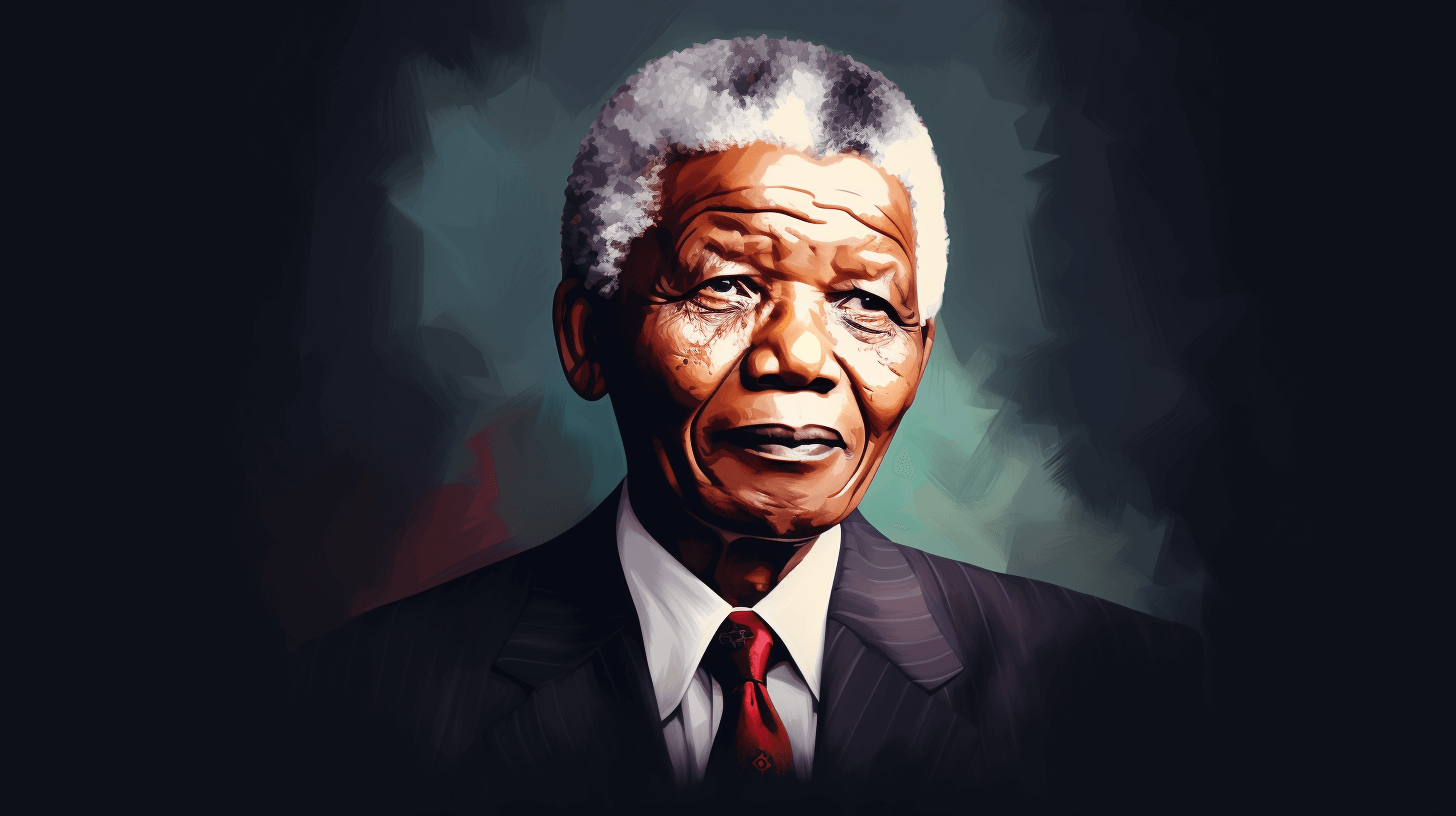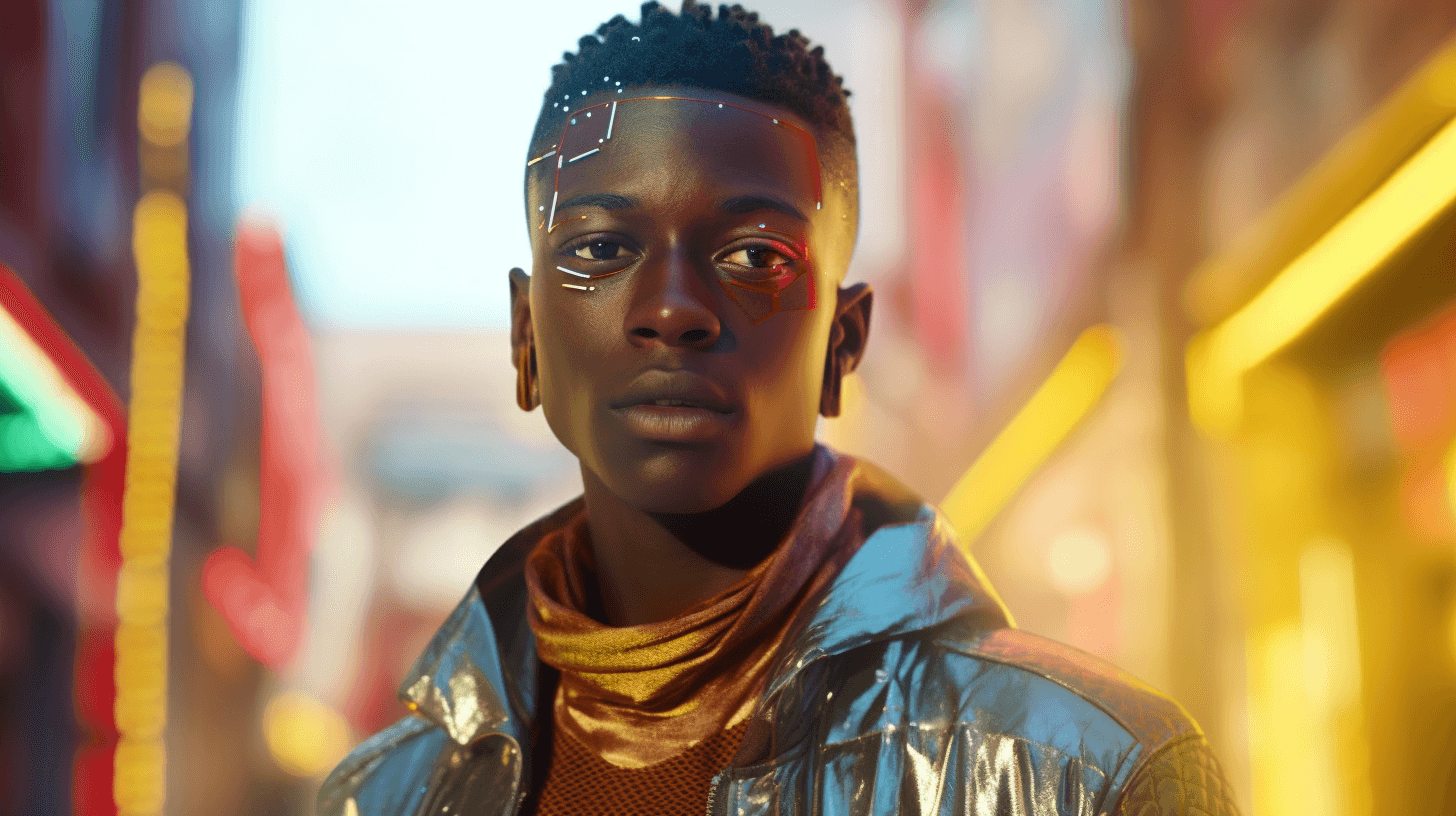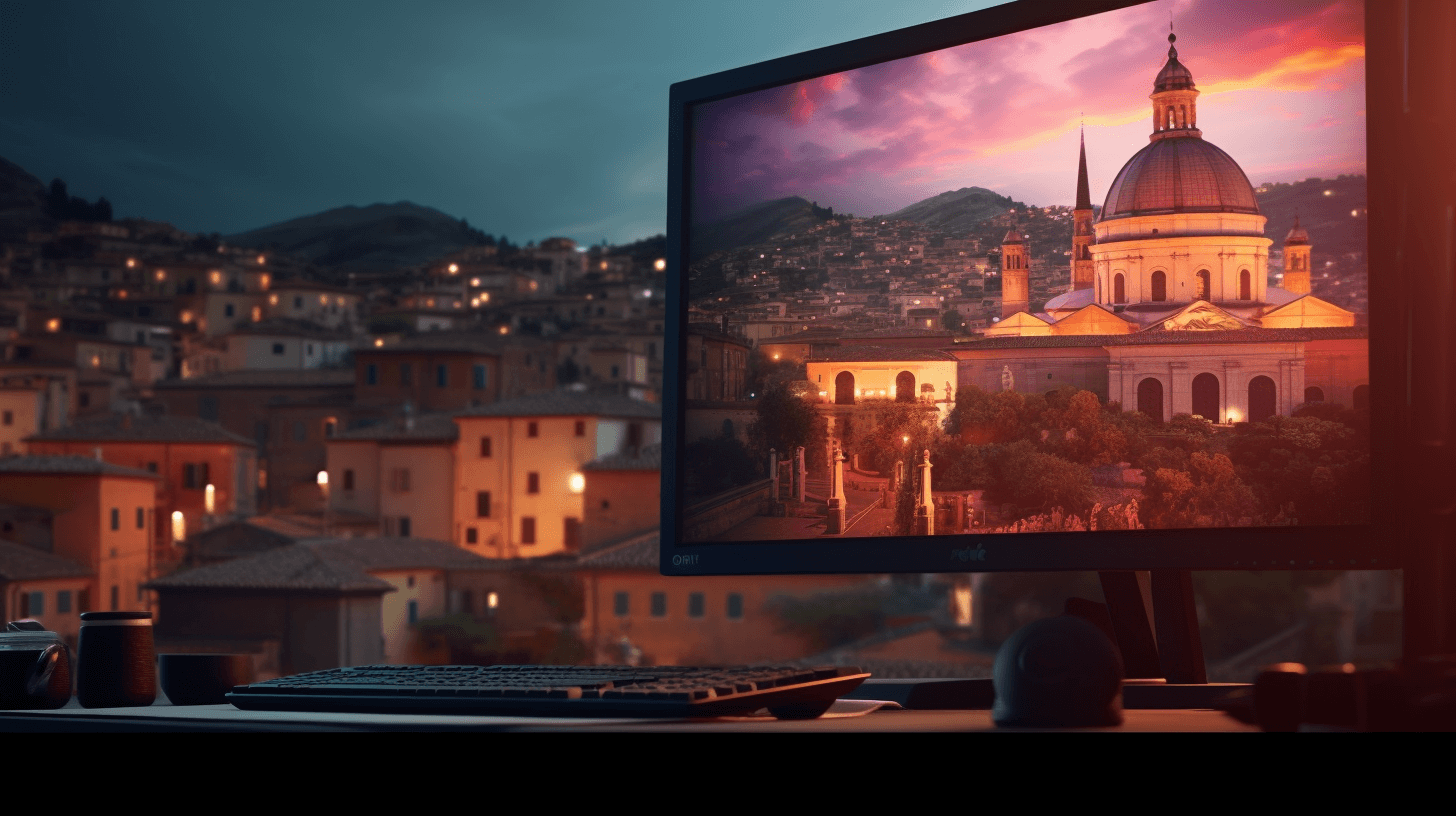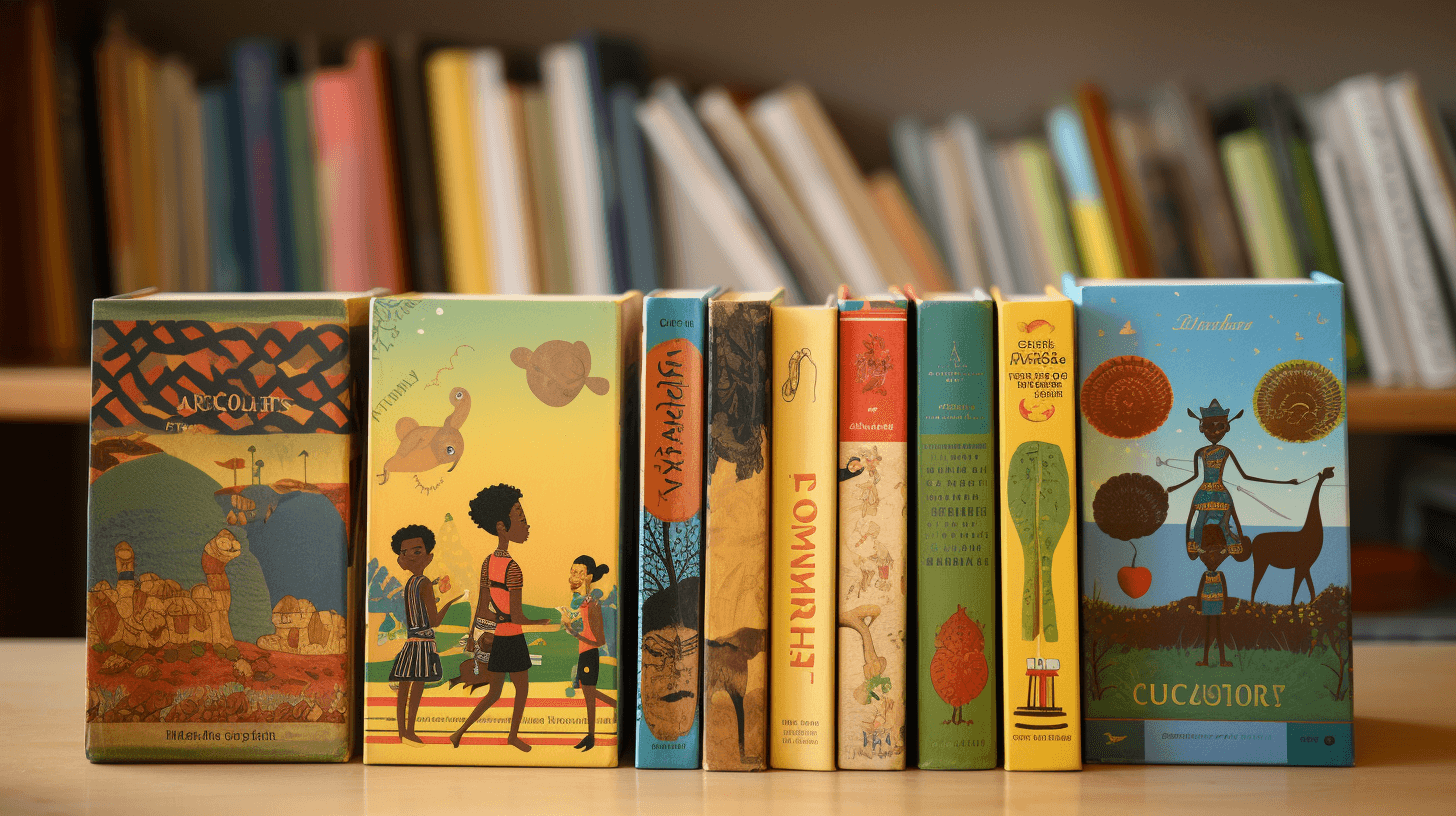🇿🇦 From Hero to Scapegoat: Nelson Mandela’s Legacy as South Africa Stumbles 😔
⬇️ Pidgin | ⬇️ ⬇️ English
South Africa, stay all hamajang, braddahs and sistahs. 😟 Da face of Nelson Mandela, da man we all respect all ovah da world and celebrate on July 18, his birthday, no look da same again in da homeland. Da young bloods stay losing da aloha for their country, da ANC party, and even for Mandela himself.🎂🇿🇦
Every corner you turn in South Africa, you see da big smiling face of Mandela.💸 Da country’s money got his picture, more than 32 streets get his name, and like 24 statues in his image watch ovah da place wea tings stay all upside down.
Every year on his birthday, July 18, da locals celebrate Mandela Day. Dey give 67 minutes of their time — painting schools, knitting blankets, cleaning up parks — all for honor da 67 years Mandela spent fighting against apartheid, plenny time behind bars.🎨🧶🌳
But 10 years since he wen mahke, da way people feel, stay changing. Da African National Congress, da party Mandela led aftah he wen come out from prison, stay at risk for losing its majority for da first time since he became president in 1994, right aftah apartheid wen pau. Corruption, no skills, and elitism wen make da A.N.C. look all pilau.😔💔
Da image of Mandela — wea da A.N.C. went plaster all ovah da country — for some guys, went from hero to pua’a. While da rest of da world still lionize Mandela, plenty South Africans, mostly da young ones, believe he neva do enough for create big changes dat would lift da fortunes of da country’s Black majority. White South Africans still hold plenny of da nation’s land, and earn tree and a half times more than da Black people.⚖️📉
In Johannesburg, every time Ofentse Thebe enter da courthouse wea he work, he gotta pass one 20-foot sculpture of one young Mandela as one boxer. He wen say he purposely no look at it, scared he gonna turn into “one walking ball of rage.”🥊😡
“I’m not da biggest fan of Mandela,” Mr. Thebe, 22, wen say. “Dere’s plenty tings dat could have been negotiated bettah when it came to giving freedom for all South Africans in ’94.”
One of his main pilikia about da economy is da no more jobs. Da unemployment rate stay 46 percent among South Africans aged 15 to 34. Plenny more guys stay undahemployed, like Mr. Thebe. He went study computer science at da university level, neva get one degree. Da best job he said he could find was selling funeral policies to da staff of da court.💻👨🎓👎
Da courthouse, with all kine fancy pillars and signs going fade, was closed one recent day cuz of citywide water shortage. Few days before, da courthouse was shut cuz no more power. Blackouts all ovah da country stay normal now.🚰💡🚫
Faith in da future stay going down da drain. Seventy percent of South Africans wen say in 2021 dat da country going in da wrong direction, up from 49 percent in 2010, according to da latest survey published by da country’s Human Sciences Research Council. Only 26 percent wen say dey trust da government, one big drop from 2005, when was 64 percent.😖📉
In most places, Mr. Mandela’s name not associated with all these pilikia, but with triumph ovah injustice. Got Mandela statues, streets, or squares from Washington to Havana to Beijing to Nanterre, France. Dis week, da South African government planning for show off one more monument, in his ancestral home, Qunu in South Africa’s Eastern Cape Province.🗽🗺️
But when da news of da new Mandela monument wen show up on her social media feed, Onesimo Cengimbo, one 22-year-old researcher and aspiring filmmaker, just wen roll her eyes.🙄💻
“Maybe da old people still buying it, but we’re not,” Ms. Cengimbo wen say. “It’s actually becoming one little bit annoying that when it comes to elections, they’re not really doing anything different, they’re just showing up Mandela’s face again.”🗳️😤
Aftah Mandela wen come out from prison in 1990, he went travel da world and lead da country to democracy, he became one singular hero.
On da playground, keiki wen jump rope and sing, “There’s a man with gray hair from far away, his name is Nelson Mandela.”👴🎶
For those who wen get da chance for be in his presence, it left one big impact.
In da basement of the Sheraton Pretoria Hotel, Selinah Papo wen look ovah da wall of photographs of V.I.P. guests until she found one black-and-white image of Mr. Mandela in 2004.
“It was like he was golden,” said Ms. Papo, with one big smile. Almost 20 years ago, she said, she was among a group of housekeepers who wen welcome Mr. Mandela with a praise song in the lobby. Da memory still so vivid dat she wen burst into song and do one small two-step dance.💃🎼
Ms. Papo, 45, lived during Mr. Mandela’s heyday. She worked her way up in da hospitality industry as international hotel chains came back to South Africa. She studied via correspondence, helped her siblings through school and eventually bought a house in what was once a whites-only suburb. Today, da cost of living and rolling blackouts have dimmed her optimism about South Africa, but she no blame her hero.
“Those who came aftah should have fixed it,” she said.🏠📚
Even some of the memorials to Mr. Mandela have seen better days. A Johannesburg bridge named for him that crosses ovah stalled trains on rusting tracks is a hot spot for muggers. A crack has started at the base of the country’s biggest monument to Mr. Mandela: a 30-foot bronze statue in Pretoria, South Africa’s executive capital.🌉🕵️♂️🗿
On a cold winter morning, Desire Vawda watched a group of South Korean tourists take pictures beside the monument. He said he was just passing time aftah protests ovah unpaid scholarships and tuition fees shut down his college campus.
Mr. Vawda, 17, belongs to a generation that knows Mr. Mandela only as a historical figure in textbooks and films. To him, Mr. Mandela’s fight to end apartheid was good. But the big economic gap between Black and white South Africans going be on his mind when he votes for the first time next year, he said.
“He didn’t revolt against white people,” Mr. Vawda said. “I would have taken revenge.”
Outside the
Da Mandela: From Supahero To Da Kik’ Paniolo As South Africa Stay Jam Up 🇿🇦😔 Nelson Mandela, worldwide one recognized good guy, every year, on July 18, his birthday, him get big respect. But back home, da young peeps no more trust in da country, his party, and even da anti-apartheid leadah himself.
In South Africa, everywhere you look, get Nelson Mandela. Da country money get his happy face, get at least 32 streets named after him, and about two dozen kine statues of him dea watching da country as tings changing.
Every year on July 18, his birthday, South Africans celebrate Mandela Day by volunteering for 67 minutes — dey paint schools, dey knit blankets or dey clean up city parks — for respect da 67 years dat Mandela wen put in, fighting for da country as one anti-apartheid leader, and plenny of dat time was behind bars.
But ten years after he wen pass away, da way peeps tink, stay changing. Da party dat Mandela was running after he wen come out of prison, da African National Congress, stay in big kine trouble, maybe going lose da straight out majority for da first time since he wen turn president in 1994 in da first free kine election after apartheid wen end. Corruption, no can do anything right, and elitism, wen make da A.N.C. look bad.
Mandela’s image — da one A.N.C. wen put all over da place — fo some peeps wen change from hero to one kik’ paniolo. While Mandela still get big respect around da world, plenny South Africans, especially da young peeps, tink dat he neva do enough for make big kine changes dat would have helped da country’s Black majority. White South Africans still own da biggest part of da nation’s land, and dey make tree and half times more money than da Black peeps.
For go inside da courthouse in Johannesburg wea he stay working, Ofentse Thebe gotta pass one 20-foot kine sculpture of young Mandela as one boxer. He said dat he try avoid looking at it, cause he no like turn into “one walking ball of rage.”
“I no da biggest fan of Mandela,” said Thebe, 22 years old. “Get plenny tings dat could have been negotiated bettah when it came to giving freedom for all South Africans in ’94.”
One of his main complaints about da economy is da lack of jobs. Da jobless rate is 46 percent among South Africans aged 15 to 34. Millions more, no more enough work, like Thebe. He went study computer science at da university level, neva get one degree. Da best job he said he could find was selling funeral policies to da staff of da court.
Da maze of courtrooms, with da fancy kine pillars and old signs, was closed on one recent day because of one citywide water shortage. Couple days before, da courthouse was shut because da power was out. Blackouts all over da country is da regular ting.
Trust in da future is falling. Seventy percent of South Africans said in 2021 dat da country is heading in da wrong direction, up from 49 percent in 2010, according to da latest survey published by da country’s Human Sciences Research Council. Only 26 percent said they trust da government, big kine drop from 2005, when was 64 percent.
In most places, Mandela’s name is not associated with these problems, but with victory over injustice. Get Mandela statues, streets or squares from Washington to Havana to Beijing to Nanterre, France. This week, da South African government going unveil one more monument, in his ancestral home, Qunu in South Africa’s Eastern Cape Province.
But when da news about da new Mandela monument pop up on her social media feed, Onesimo Cengimbo, one 22-year-old researcher and aspiring filmmaker, just rolled her eyes. “Maybe da old peeps still buying it, but we’re not,” Ms. Cengimbo said. “It’s actually getting little bit annoying that when it comes to elections, dey not really doing anything different, they’re just showing up Mandela’s face again.”
During da crazy kine transition from apartheid, children of color were told by their families dat Mandela was just one of da many leaders fighting for their freedom. But after he came out of prison in 1990, toured da world and lead da country to democracy, he became one singular hero.
On da playground, kids jumped rope and sang, “Get one man with gray hair from far away, his name is Nelson Mandela.”
For those who got da chance to be in his presence, it left one big impression.
In da staff area in da basement of da Sheraton Pretoria Hotel, Selinah Papo looked at a wall of pictures of V.I.P. guests until she found one black-and-white image of Mandela in 2004.
“Was like he was golden,” said Ms. Papo, smiling big. Almost 20 years ago, she said, she was among a group of housekeepers who welcomed Mandela with a praise song in da lobby. Da memory still so strong that she started singing and even did a little two-step dance.
Ms. Papo, 45, lived through Mandela’s best times. She worked her way up in da hospitality industry as international hotel chains came back to South Africa. She studied by correspondence, supported her siblings through school and eventually bought a house in what was once a whites-only suburb.
Today, da cost of living and da blackouts have made her less hopeful about South Africa, but she does not blame her hero.
“Those who came after should have fixed it,” she said.
Even some of da memorials to Mandela have seen better days. A Johannesburg bridge named for him dat crosses over dozens of stalled trains on rusting tracks is one hot spot for muggers. A crack has started at the base of the country’s biggest monument to Mandela: a 30-foot bronze statue in Pretoria, South Africa’s executive capital.
On a chilly winter morning, Desire Vawda watched a group of South Korean tourists taking pictures next to the monument. He said he was killing time after protests over unpaid scholarships and tuition fees shut down his college campus.
Mr. Vawda, 17, belongs to a generation that knows Mandela only as a historical figure in textbooks and films.
To him, Mandela’s fight to end apartheid was something good. But da big economic gap between Black and white South Africans will be on his mind when he votes for the first time next year, he said.
“He didn’t fight against white people,” Mr. Vawda said. “I would have taken revenge.”
Outside da library of Nelson Mandela University in the coastal city of Gqeberha, Asemahle Gwala said that when he was a student, he spent hours sitting on a bench next to a life-size statue of Mandela. Students would sit in the statue’s lap, or dress up the statue with clothes and lipstick.
Mr. Gwala, now 26, said he took it as a reminder that Mandela was one human — not the commercial brand he has been turned into.
South Africans, he said, would feel more connected with Mandela if they could see him not as a statue and monument but “
“Maybe the young generation might feel, ‘Yeah, that’s someone I could identify with.’ That’s someone I could look up to. Someone that’s not just an icon,” Mr. Gwala said.
A generation of South Africans have grown up with Mr. Mandela as a figure in textbooks and a face on banknotes, but they feel an increasing disconnection from his legacy.
After the anti-apartheid struggle, Mr. Mandela sought to build a “Rainbow Nation” of racial and ethnic harmony. It’s a vision that has proven elusive in a country where white South Africans still hold a disproportionate share of the nation’s wealth.
Though Mr. Mandela’s image and legacy are embraced internationally, at home he is increasingly seen as a symbol of a bygone era, even as his name and face continue to be used as a political tool.
Young South Africans feel they are not benefiting from the struggle that Mr. Mandela led. They are demanding change and accountability from the African National Congress (ANC), the political party that Mr. Mandela led to power. But the party’s inability to deliver on its promises has led to widespread disillusionment.
The disconnection is especially acute among South Africa’s youth, who face massive unemployment and economic inequality. It is here, in their disillusionment, where the hero-to-scapegoat narrative of Mr. Mandela emerges.
It’s a painful narrative for many South Africans, but one they feel they must confront in order to move forward. As South Africa’s political landscape shifts, the narrative around Mr. Mandela is also changing, from a symbol of hope and unity to a reminder of unfulfilled promises and missed opportunities.
And with the Mandela brand in crisis, there is a growing sense that South Africa’s iconic figure may be more of a burden than a boon. The once revered leader is now seen as a figure who failed to address the country’s deep-rooted social and economic problems.
As the country continues to grapple with these issues, the spotlight has turned onto Mr. Mandela’s legacy. South Africans are questioning whether the hero they revered is the hero they need.
NOW IN ENGLISH
🇿🇦😔 From Hero to Scapegoat: Nelson Mandela’s Legacy as South Africa Stumbles
Nelson Mandela, a universally admired figure, is celebrated each year on his birthday, July 18th. Yet, in his home country, a growing number of young South Africans have lost faith in their nation, his political party, and even the anti-apartheid leader himself.
In South Africa, Nelson Mandela is ubiquitous. His smiling face graces the country’s currency, at least 32 streets bear his name, and roughly two dozen statues of him dot the landscape, overseeing a nation in flux.
On Mandela Day, celebrated each July 18th, South Africans honor his memory by volunteering for 67 minutes — painting schools, knitting blankets, cleaning up parks — to commemorate the 67 years Mandela dedicated to fighting for their country as an anti-apartheid leader, a significant portion of which was spent behind bars.
However, a decade after his passing, public sentiment is shifting. Mandela’s political party, the African National Congress (ANC), which he led post-prison, is in crisis, potentially losing the majority for the first time since he became president in the country’s first free election following apartheid in 1994. Accusations of corruption, inefficiency, and elitism have tainted the ANC’s image.
Mandela’s image — heavily promoted by the ANC — has for some, shifted from hero to scapegoat. While Mandela still garners global respect, many South Africans, particularly the younger generation, feel he did not do enough to implement significant changes that would have benefitted the country’s Black majority. White South Africans still possess the majority of the nation’s land and earn three and a half times more than their Black counterparts.
To enter his workplace in Johannesburg, Ofentse Thebe must walk past a 20-foot sculpture of a young Mandela as a boxer. He said he tries to avoid looking at it to prevent becoming a “walking ball of rage”.
“I’m not Mandela’s biggest fan,” admitted Thebe, 22. “There are many things that could have been negotiated better when it came to securing freedom for all South Africans in ’94.”
A significant gripe is the scarcity of jobs. Unemployment sits at a staggering 46 percent among South Africans aged 15 to 34. Millions more, like Thebe, who studied computer science at university but did not earn a degree, are underemployed. The best job he could find was selling funeral policies to courthouse staff.
The intricate courthouse, with its stately pillars and old signs, was closed on a recent day due to a citywide water shortage. A few days prior, the building was shuttered due to a power outage. Such blackouts are a recurring event across the nation.
Trust in the future is dwindling. According to the latest survey published by the country’s Human Sciences Research Council, 70 percent of South Africans believed in 2021 that the country was headed in the wrong direction, a steep increase from 49 percent in 2010. Only 26 percent claimed they trusted the government, a significant drop from 64 percent in 2005.
In most places, Mandela’s name is not associated with these issues, but with victory over injustice. Mandela monuments, streets, and squares can be found from Washington to Havana to Beijing to Nanterre, France. This week, the South African government will unveil another monument in his ancestral home, Qunu in South Africa’s Eastern Cape Province.
However, when news of the new Mandela monument appeared on her social media feed, 22-year-old researcher and aspiring filmmaker, Onesimo Cengimbo, was nonplussed. “The older generation may still be buying it, but we’re not,” Cengimbo said. “It’s actually getting a little bit annoying that when it comes to elections, they’re not really doing anything different, they’re just trotting out Mandela’s face again.”
During the tumultuous transition from apartheid, children of color were taught by their families that Mandela was but one of many leaders fighting for their freedom. But after he was released from prison in 1990, toured the world, and ushered the nation into democracy, he became a singular hero.
On playgrounds, kids would jump rope and sing, “There’s a man with gray hair from far away, his name is Nelson Mandela.”
For those who had the opportunity to meet him, the encounter left an indelible impression.
In the staff area in the basement of the Sheraton Pretoria Hotel, Selinah Papo scanned a wall of photos of VIP guests until she found a black-and-white image of Mandela from 2004.
“He was golden,” said Papo, smiling broadly. Nearly 20 years ago, she was among a group of housekeepers who greeted Mandela with a praise song in the hotel lobby. The memory is still so vivid that she began singing and even performed a small two-step dance.
Papo, 45, witnessed the apex of Mandela’s era. She ascended in the hospitality industry as international hotel chains returned to South Africa. She studied via correspondence, supported her siblings through school, and eventually purchased a house in what was once a whites-only suburb.
Today, the cost of living and frequent power outages have left her less optimistic about South Africa, but she does not blame her hero.
“The ones who came after should have fixed it,” she stated.
Even some of the memorials to Mandela have seen better days. A Johannesburg bridge named after him that passes over dozens of stationary trains on rusting tracks is a hotspot for muggers. A crack has begun to form at the base of the country’s largest monument to Mandela: a 30-foot bronze statue in Pretoria, South Africa’s executive capital.
On a brisk winter morning, Desire Vawda observed a group of South Korean tourists snapping photos beside the monument. He was killing time after protests over unpaid scholarships and tuition fees closed his college campus.
Vawda, 17, belongs to a generation that knows Mandela only as a historical figure in textbooks and films.
To him, Mandela’s fight to end apartheid was commendable. But the significant economic disparity between Black and white South Africans will weigh on his mind when he votes for the first time next year, he said.
“He didn’t fight against white people,” Vawda said. “I would have exacted revenge.”
Outside the library of Nelson Mandela University in the coastal city of Gqeberha, Asemahle Gwala said that when he was a student, he spent hours sitting on a bench next to a life-size statue of Mandela. Students would sit in the statue’s lap, or dress the statue with clothes and lipstick.
Gwala, now 26, viewed this as a reminder that Mandela was human — not the commercial brand he has been turned into.
South Africans, he said, would feel a stronger connection with Mandela if they could view him not as a statue or monument but as “someone I could look up to. Someone who is not just an icon,” Gwala said.







